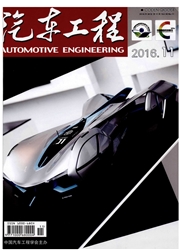

 中文摘要:
中文摘要:
通过分析26辆轻型汽油车和液化石油气车的实际驾驶行为、车辆比功率和标准化油耗率的关系,引入最小油耗速度参数,提出了道路交通燃油经济性指数及其实用模型。应用该模型对不同国家、城市的行驶循环进行了燃油经济性的比较,并分析了电子收费方式对提高燃油经济性的作用。最后指出了此模型相对其它模型的优点、局限性及进一步研究的方向。
 英文摘要:
英文摘要:
The relationships between the real driving behavior, the vehicle specific power, and the normalized fuel consumptions are analyzed based on the test data of 26 gasohne-and LPG-fueled light duty vehicles. Then, a parameter of vehicle speed for minimum fuel consumption is introduced and an indicator for fuel economy in road traffic is proposed with a corresponding practical model developed. The model is applied to the comparison of fuel consumption levels among several typical driving cycles used in different countries and cities with the role of electronic toll collection in improving fuel economy analyzed. Finally, the merits of the proposed model are also discussed with its limitations and the direction of further study pointed out.
 同期刊论文项目
同期刊论文项目
 同项目期刊论文
同项目期刊论文
 期刊信息
期刊信息
